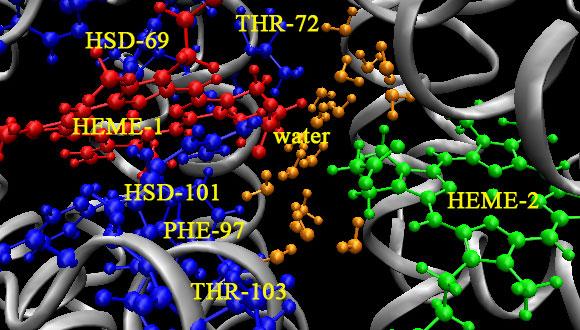PhD Chemical Physics Seminar
Nirit Nachman, School of Chemistry, Tel Aviv University (Prof. Selzer's Group)
Title: "Inelastic Tunneling Spectroscopy as a Method to Probe the Effective Temperature in Plasmonic Hot Spots"
Abstract: The coupling of light to surface plasmons enables to create strong enhancement of the electric field, confined to sub-wavelength hot spots of nanometeric length scales. The elevated temperatures localized at these hot spots is the subject of much interest and research, due to possible applications and thermal effects. Existing methods to evaluate this localized temperature are mostly optical, have diffraction-limited resolution of hundreds of nanometers, and all fail to measure the temperature of the hot-spots themselves. In this talk I will present a new approach, based on an electrical measurement of Inelastic-Tunneling Spectroscopy (IETS). This method is the first to enable a measurement of the local temperature of the plasmonic hot-spots, with a spatial resolution of down to a few nanometers.
Rona Shaharabani, School of Chemistry, Tel Aviv University (Prof. Beck's Group)
Title: "On Multiple Sclerosis and Biophysics"
Abstract: Like electrical wires, the nerve cells in the body are coated with an insulating layer called myelin sheaths. In multiple sclerosis (MS) disease, the immune system mistakenly identifies the myelin as invading pathogens. Once the protective sheaths are damaged, the nerves are essentially "short circuited", leading to versatile neurodegenerative symptoms. From the biophysical perspective, the myelin sheaths are a tightly packed, multilayered lipid-protein complex. The key hurdle in modelling such biological systems originates from complex interactions between multiple components. Physical models and experiments often reduce the number of components aiming to address the fundamental mechanisms. Nevertheless, in most cases, the inherent heterogeneity is an essential ingredient in the biological context. Here, we tackled the complex biological system of myelin sheaths, taking into account the heterogeneous lipids mixture and its relevant adhesive protein. Using synchrotron small angle X-ray scattering and direct cryogenic transmission electron microscopy, we performed structural measurements on model systems mimicking cytoplasmic myelin sheath complexes. Alteration in lipids composition, as in the MS diseased state, results in structural instabilities and phase transition from healthy lamellar to diseased inverted hexagonal structures. We also find that buffer salinity and temperature affect the self-assembly structures and result in the same pathological phase transition. In this talk I wish to map the delicate and complicated force balance between the myelin sheaths constituents and their effects on the structure of the composite system. This may help us understand the onset of instability in the transition to the diseased state, and postulate on de-novo drugs that can work in alternative pathways.


